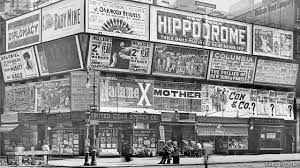Billboards may be one of the primary visual components of a modern metropolis, but they are a long-established marketing technique. Billboard advertising has existed as a concept for millennia. Early cave drawings depict propaganda messages asserting the dominance of different civilizations and groups. Though billboards have been around longer than we have, they are far from an outdated advertising strategy.
Billboards: A Case Study
There might be no better way to learn about billboards and their efficacy in the marketing world than to observe how they function in a big city. Kansas City billboards occupy many areas in the state’s fourth most populous city, especially in high-traffic areas such as highways, arterials, and intersections.
Advertising companies consistently rotate billboard artwork to help companies achieve their desired reach within the parameters of their four-week advertising campaigns. The return on investment for these campaigns is high. Traditional billboards cost about $1,000 on average while digital billboards are closer to $4,500 apiece. They might be seen by hundreds of thousands or millions of locals and visitors, generating thousands of sales.
In the long run, these billboards can earn a company high profits without companies needing to pay to run advertisements multiple times on social media or television. While it might seem like billboards are less flexible and dynamic than online advertisements, they are far from old-fashioned. They adapt to evolving technologies to tell brand stories with captivating visuals. Digital billboards are easy to maintain and highly adaptable, making them highly effective even in the modern age of online popups and social media scrolling.
Billboards are nothing new. We’re all familiar with driving under sprawling images and texts promoting lawyers, casinos, and the latest blockbuster as we cruise down the freeway. However, how long have they been a part of our lives and societies?
The Origin Story
Billboards as we know them originated in the 1830s when Jared Bell created visual out-of-home advertisements for the Barnum and Bailey circus. These billboards depicted colorful imagery on a large scale, which we take for granted in modern billboard campaigns.
Within the ensuing decades, more companies followed suit, recognizing billboards’ efficacy as a marketing strategy for increasing brand awareness and sales. By the 1860s, businesses began leasing outdoor spaces to display their billboards. Throughout the remainder of the 19th century, people organized billboard associations to regulate size, placement, and time limits on campaigns.
In 1889, the Paris Exposition unveiled the first 24-sheet billboard, which became the standard size for billboards across the globe. During the first decades of the 20th century, large companies and conglomerates initiated a boom in national billboard campaigns. By the 1920s, outdoor advertising began to characterize metropolises, and the first outdoor advertising company was listed on the New York Stock Exchange.
There was one particular player that marked the 20th century and secured billboards’ popularity for generations to come: the automobile industry. As more and more people began owning and operating vehicles, using them to commute to work, run errands, and travel, the need arose for highways, creating opportunities for displaying billboards in high-traffic areas. Once the United States established the official Interstate Highway System, billboards converted customers on a massive scale. In 1965, the Highway Beautification Act imposed regulations on billboard sizing and placement, helping to even the playing field between competing businesses and setting customer expectations for OOH advertising.
As interstates and government policies changed the advertising landscape, “non-profit” billboards emerged. Public health information spanned the 24 sheets alongside propaganda and calls to action to support war efforts and fund projects.
Current State of Billboards
Billboards comprise over 50% of out-of-home advertising efforts. Though much has changed since billboards looked like hieroglyphics scrawled on cave walls, they present consistent benefits for companies large and small.
Above all, consuming billboard advertisements requires little to no effort on the part of the customer. They’re also omnipresent in consumers’ lives, allowing maximum brand exposure. They are less expensive than running advertisements on television and more difficult to ignore. You can also make your billboards location-specific, customizing your messages and images based on the interests of local interests and giving small businesses a marketing edge.
Conclusion
Billboard advertisements have a long and rich history of helping businesses achieve success in marketing. They are familiar yet captivating, cost-efficient, and adaptable. They’re changing with the times but have always been an effective way of drawing customers in and encouraging them to engage with brands.
